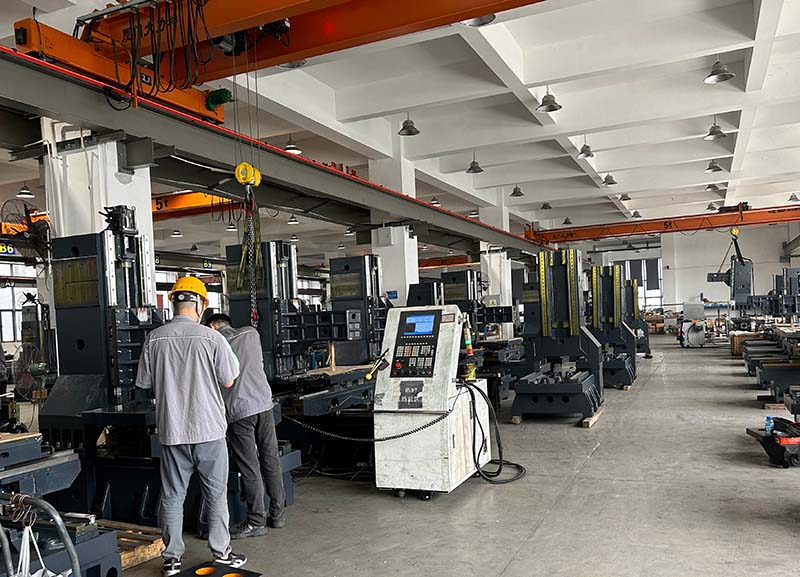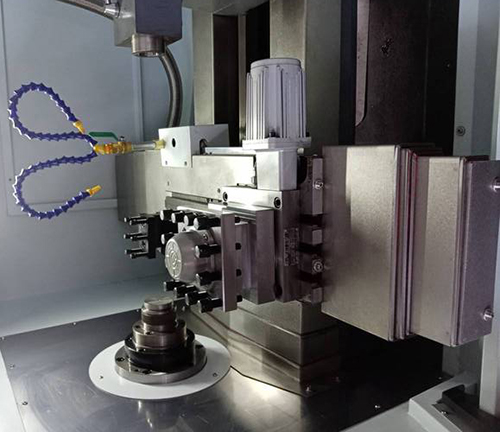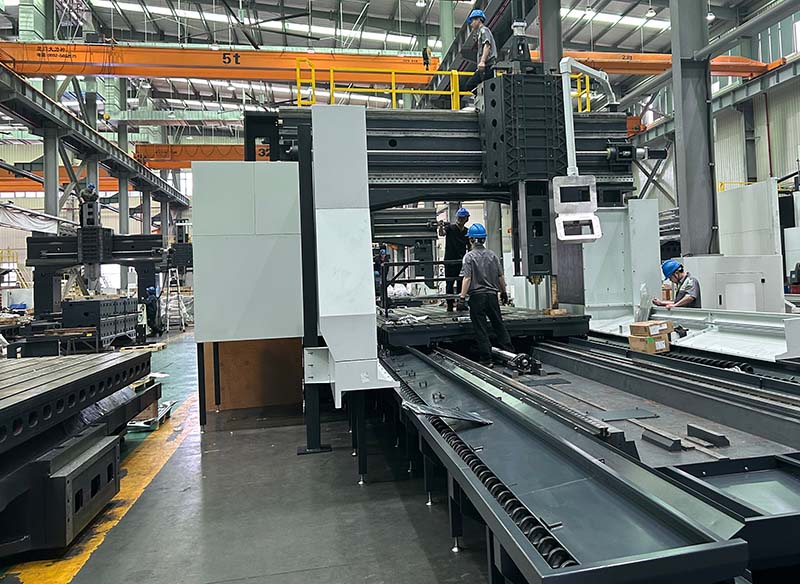t's no secret that CNC machines are leading the way in this rapidly advancing world! Surprisingly, these incredible machines not only stand at the forefront of innovation but also revolutionize industries upside down and inside out. Whether you work in the manufacturing field, aerospace, electronics, or even medical industries, CNC machines have got you covered. They produce high-quality complex machine parts, panels, electronic components, circuit boards, intricate prototypes, and almost whatever you need for your industry with unmatched precision – plus in no time!
But wait! There are some crucial things to consider before you buy a life-changing CNC machine. They have two critical components that dictate their performance - linear guide rails and hard rails. Perhaps you have already come across people debating between hard rail and linear rail options. It’s really challenging to grasp the difference and make a choice, isn’t it?
Well, certainly not! Although both mechanisms facilitate movement and stability, they differ significantly in their design and application. Therefore, in this article, we are going to understand the key differences between these two systems. Whether you're new to these terminologies or have some knowledge but want to understand better, stay stick to this one. I am sure after reading this you will be able to figure out which one suits your industry best. So, stay tuned!
Here is one more thing. CNC machining centers come in different configurations, each tailored to specific industrious applications and requirements. But all the focus of the machine lies on the two primary systems that define the movement of the machine's cutting head - linear rail systems and hard rail systems. Now you know in CNC machines, the movement of the cutting tools is facilitated by rail systems, which guide the motion along a specific axis. So, let’s figure out what are these two machining systems and how they work.
The first one is the linear railing system or we also called it linear guide or linear motion system. This highly-advance rail system uses a series of rolling elements, such as balls or rollers to move in linear motion. In other words, there are designs to slide (over cutting head or worktable) to minimize friction and provide smoothness along the track. And this feature makes it perfect for the machining process which needs rapid movements and accurate positioning.

As the rolling elements reduce friction, CNC machines allow you to achieve exceptional levels of precision and smoothness in their movements. And finally, you get impeccable cuts, smooth surface finishes, and high-quality products.
The most remarkable feature of this system is the rolling mechanism. It not only decreases wear on the rail and bearings but also enhances the longevity and durability of the machine. Put simply, your machine doesn’t need frequent maintenance. In fact, it wouldn't be an exaggeration to say that it provides a long service life.
Noise – one of the reasons why you avoid going to a bustling machine working site. But luckily, linear guides generate far less noise compared to other mechanical systems. This means their rolling action creates a more peaceful and calm working environment. So, you can easily put in long hours of work without the burden of headaches and earaches bothering you.
Linear guide rails are gaining popularity because of their high speeds and acceleration processing. You see the machine tools now run extremely fast, especially the idling speed. And the credit goes to the rolling friction operation mode that makes sure your workpieces get precisely processed. For instance, nowadays Z-axis movement speed of tapping rigs is generally around 60M.
One of the advantages of linear railing is its simple and easy assembly process. Even with minimal training, you can put together this highly advanced system. Once you know the proper parts and appropriate precision provided by the manufacturer, you can assemble them without extensive experience.
Linear guide rails can be more expensive compared to hard rails. This is primarily due to the incorporation of rolling elements and higher precision manufacturing requirements. Furthermore, the carrying capacity of linear rails is relatively lower.
Even though they are the best choice for precise processing, linear guide rails can suffer from issues like dust and debris accumulation. It may impact their performance over time if not properly maintained.
It’s obvious that linear guide rails require regular lubrication to maintain their smooth movement. This means extra maintenance overhead! You need to ensure that your rails are lubricated well to reduce any chance of wear or tear. Moreover, as they allow small contact surfaces, the rigidity is relatively lower than hard rail.

Linear rails play a vital role in facilitating the smooth movement of the cutting tool or workpiece in CNC machines. While there are many different types of linear rails, the most commonly used are:
These are high load-bearing rails that use cylindrical rollers to enable low-friction motion. As they can support heavy loads, they are often used in large CNC machining centers and gantry-style machines.
Ball screw rails are composed of ball bearings and screws that convert rotary motion into linear motion. These rails are usually used where highly precise positioning and minimal backlash are required.
Boxway rails are also known as box guideways. They mainly consist of a sliding carriage and a stationary box-shaped rail. The carriage has sliding surfaces that match the dovetail shape of the rail, ultimately increasing the contact area. As a result, boxway rails can withstand heavy loads with minimal deflection.
These rails comprise crossed cylindrical rollers, which are located between the rails and the carriage. This setting makes them highly stiff and accurate in performance. They are suitable for applications that require smooth and precise linear motion, such as CNC grinding machines and high-precision milling machines.
As you see the line rail is suitable for all high-speed machining processes. It can cut at high speed, process products continently, and make small precision molds. Therefore, this system is ideal for:
a. CNC milling machines: To provide smooth and precise movement of the cutting tool along the X, Y, and Z axes.
b. CNC Laser Cutting Machines: Allow stable movement for the laser head. So you get a precise cutting of various materials with minimal kerf width.
c. Automotive Industry: For manufacturing components like engine parts, transmission parts, and chassis components with tight tolerances.
In addition, you can use line rail configuration for your medical industry (produce custom implants, prosthetics, and medical devices), mold-making, metal fabrication (sheet metal cutting and bending), etc.
The second type of CNC machine center is Hard Rail System. Also known as boxway or box guide, this system is said to be traditionally used in older CNC machines. However, don't let its age fool you; it still finds relevance in today's era. Its robust design with hardened and ground surfaces provides you with excellent rigidity and support. This is why it remains actively used in various industries, especially for heavy-duty machining operations.
The hard rail system is made up of metal sliding surfaces and lubrication channels that ensure smooth movement. In simpler terms, it works direct sliding mechanism - the sliding element makes direct contact with the (rectangular) rail, as opposed to the rolling elements found in linear guide rails.
One of its outstanding characteristics is its exceptional load-bearing capacity. The guide rail's hardness, attained through high-frequency or super audio frequency quenching, typically exceeds 50%. This results in good wear resistance, making it a reliable choice for heavy machining processes.

No doubt, hard rails provide unbeatable rigidity and robustness. The sliding friction surface of the hard rail is large, that’s why the machine has strong rigidity and good stability. So, it can handle heavy loads, manage heavy-duty cutting and do complex machining tasks. In short, it provides a smooth machining experience even with large tool volumes and large feeds.
As hard rails have fewer moving parts, they are simpler in design compared to linear guide rails. That means they're easy to install – just require minimum effort and time to get them up and running.
Another advantage of using a hard rail for machining parts is that it’s more resistant to contaminants (like dust, debris, and coolant). This reduces the risk of damage and maintenance charges - ensuring you are served with consistent performance over time.
Hard rails come with the advantage of strong shock resistance. They can withstand seismic disturbances and maintain operational stability even under such daunting conditions.

The first thing to keep in mind regarding hard rails is that they might not offer the same level of precision and smoothness as a linear guide. As mentioned earlier, they work on sliding mechanisms with limited movement speed, which can potentially result in slightly rougher finishes or products.
As the contact surface of hard rail in CNC machining is large, the friction coefficient is also high. Put simply, if the machine parts aren’t properly lubricated, the track will burn or wear out due to the heat of friction. Moreover, your machine will need regular inspection and adjustments. This means it will require more frequent maintenance compared to linear guide rails. The service life of hard rail is not long!
Although this machine can do heavy-duty tasks for you, it’s quite difficult to process. This is because the hard rail is generally integrated with the main components of the machine tool (base, column, table, slide saddle) during the processing. Which is why its shape, movement, precision, and position are difficult to control.
Furthermore, the assembly of a hard rail is also a bit hard going. It combines technology and physical strength together. So, it’s somewhat impossible to be completed by ordinary workers.
Hard rail systems are well-suited for heavy-duty cutting and material removal tasks, such as milling large components of machines. These rails can be used in:
a. Machine Tools: Used in CNC milling machines, lathes, grinders, and machining centers.
b. Industrial Robotics: In industrial automation, hard rails allow robotic arms and other motion control systems to handle heavy payloads accurately with high repeatability.
c. Automotive Industry: Used for manufacturing engine components, such as cylinder heads, engine blocks, and crankshafts.
d. Aerospace Industry: CNC turning machines with hard rails are used to produce high-precision components like landing gear parts, turbine blades, and aerospace fasteners.
When it comes to choosing the right system, it depends on the specific requirements of your machining tasks. Just keep in mind that linear guide rail systems utilize a set of bearings that glide smoothly along a linear rail. This design ensures smooth and precise movement of the cutting head, resulting in accurate machining outcomes. The reduced friction in linear guide rails leads to lower wear and tear, contributing to longer machine life and higher precision over time. But the linear rail is inferior to the hard rail in terms of stability, heavy-duty task, and rigidity.
At the same time, hard guide rail systems involve rigid, durable rails that guide the cutting head's movement. These hard rails offer excellent stability and support, especially for heavy-duty cutting operations. But they may exhibit slightly more friction than their linear counterparts. And they are not as versatile as linear.
Linear Rail vs Hard Rail
|
Features |
Linear Rail |
Hard Rail |
|
Velocity |
Fast |
Slow |
|
Resistance |
Small |
High |
|
Carrying capacity |
Low |
High |
|
Rigidity |
Low |
High |
|
Cost |
High |
Low |
|
Maintenance |
Simple |
Complex |
|
Repair |
Simple |
Complex |
|
Exchange |
Simple |
Very complex |
|
Main axis torque |
Below 1950nm |
1000/1450nm |
|
Application range |
Small lathe |
Big lathe |
Now you may think of which one system is better. So, the simplest way to tell is: If you need a CNC machining center to make products, buy linear rails. On the other hand, if you want a CNC machine to process molds, buy hard rails.
To sum up, the difference between hard rail and linear rail systems in CNC machining parts lies in their construction, performance, and application suitability. Both hard rail and linear rail have their own pros and cons. Now you understand the differences between them so select the CNC machining center according to your own industry needs and conditions.
For more detail about CNC machines and their working, visit CNC Yangsen today.
Moreover, if you are looking for the best CNC machines or boring machines, we have got you covered too. As we, CNC Yangsen, are the global pioneer of precise machinery, we understand your needs and industry trends. And this is why we are your go-to destination for top-quality machinery solutions. Our commitment to innovation and customer satisfaction sets us apart as a trusted partner in the industry. In short, our offerings are unmatched, delivering cutting-edge technology and precision that meet the highest standards. Visit us today and discover the future of precise machinery. Your success is our priority. Let's take your manufacturing to the next level together!